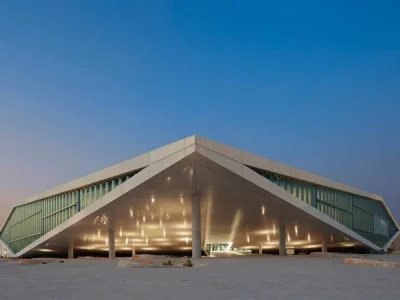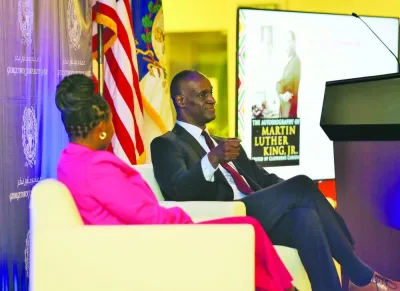The artefacts resonate and instantly connect with people, taking them back in time
and letting them see the world of generations before them, writes Umer Nangiana
Every object from history has a distinct value and character attached to it. Sometimes just one single object tells dozens of stories about the people, culture and the societies it comes from. Collecting such articles not only preserves some of the greatest works of artisans, it documents history in a form that is more visual and interactive.
It resonates and instantly connects with people, taking them back in time and letting them see the world of generations before them. One such grand show of collections of historical grandeur is on display at Mal Lawal, ‘from the old days’ in Qatari dialect, currently showing at Doha Exhibition Center (DEC).
Displaying 4,000 traditional artefacts by more than 110 Qatari private collectors and 42 from the wider GCC region, the biennial connects visitors to the country’s cultural heritage and history.
Carefully organised into nine categories, Mal Lawal features manuscripts, weapons, Islamic collections, old maps, ethnographic or heritage items, antiquities, jewellery, clothing and accessories besides many rare items from Qatar and the rest of the GCC.
At the 8,000 square meter space, designed to take the visitors on a virtual tour of the region’s cultural history, Community met some of the featuring private collectors from Qatar and the region.
Mohammed Abdulla Aljabir, a Qatari collector of Islamic art, is one of the prominent featuring exhibitors. His collection focuses more on ceramics and pottery from certain dynasties between 7th and the 15th centuries such the Ummayyads and the Saljuks.
He also has a collection of manuscripts from different periods, including the Mamluks and the Ottoman era. The collection of the manuscripts, most of it, is dated and also signed by the calligraphers.
“I am trying to focus more on certain dynasties because Islamic art is huge. You cannot really collect everything. I need to mention here also that I do collect Islamic coins, gold and silver coins, again from certain dynasties. My collection focuses more on the Ummayads and the Saljuks era,” Aljabir tells Community.
One of the most precious objects in his collection of potteries and ceramics is a Saljuk era bowl called Minayi bowl from Kashan, Iran of late 12th century. “It is the design actually. This style and design is very special because of the art inside the bowl which reflects a Saljuk woman and a man. And the colours are very special. It is very rich in colours,” Aljabir says to explain why the object is special.
“This style is very rare. At auctions, it can reach up to £15,000-20,000 or may be more,” he adds. Aljabir has been collecting since 2010. He buys his objects from antique dealers and auctions in the UK and the US such as the Christie’s and Sotheby’s auction houses.
The Qatari private collector started in 2010 by collecting coins. “Everything started when I visited the Museum of Islamic Art (MIA). I am very interested in history in general and museums in particular, so when I visited the MIA, it impressed and influenced me and gave me this interest towards arts from the Islamic world,” says the exhibiting collector.
“It was then that I decided to start with collecting coins because coins actually are a very important source of history. Such a coin contains the name of the king, the place it was made and melted and the year. It combines arts from different calligraphies and inscriptions. It also tells us about the geography,” observes Aljabir.
Collecting coins, he says, opened his interest to Islamic history. In 2011, he met someone who is an antique dealer from Doha collecting old pieces of art. Some of his antiques were ceramics from Islamic world. From there onwards, Aljabir also started collecting ceramics.
He mostly collects depending on the periods and the dynasties he is interested in such as the Ummayyads and the Saljuks. Whenever an auction is announced, he catalogues the auction and the auctioneer, and then tries to find which pieces belong to these two periods.
The next step is to look to the patterns. “If there is a very special pattern then I try to bid on that piece. Learning the styles and the patterns of these pieces is very important as collector and I am always going back to the antiques and the Islamic art experts as well as references and catalogues,” says Aljabir.
His journey of collecting, he says, is still on and he is still learning every time and every day. Aljabir is looking forward to collecting coins and ceramics from the Andalusian period in Spain from 9th and 11th century.
Jaser Yousef J Aldwalhi has come from Riyadh, Saudi Arabia, to exhibit his collections of children’s toys and schools books. His unique items from 50-60 years ago include objects such as curriculum books, toys, sweet or chocolate boxes and catalogues and some antique electronics items.
“This is very special to me. At my home, I have collections of the pieces of art and antiques but this collection of mine is unique. It is different and it is very dear to me,” said Aldwalhi.
“I like it because it takes you back into that time. It has memories attached to it and it tells you about your ancestors and grandparents and the times when they were children,” he says to explain why he chose to collect toys.
Mostly, he buys from shops selling antiques, and sometimes directly from the people who want to sell them. “Sometimes, I buy them from old people in my city when I visit them and see these objects. I ask them if they would want to sell and then I buy them,” says the Saudi collector.
He has about 500 pieces in his collection; more than 150 pieces of vintage toys, over 300 books for children and electronics such as radios.
Jamal Saleh N A Riashi from Qatar is another exhibitor who has certain unique objects in his collection. They are old vases made of glass and painted with silver. Made during 40s and 50s of the 20th century, these vases were widely used in the Gulf region including Qatar, Bahrain and Kuwait.
“They are made in Europe. They were imported into these areas. I collected them from the people of the Gulf area, whoever was offering to sell them. It is part of our tradition and most of it would be lost unless we collect it and preserve it,” Riashi tells Community.
“The world has changed and people do not use them anymore. So they are antiques,” says the collector, adding that the number of vases in his collection was a secret.
The value of such pieces, he says, depends on the collector. The way people look at these items differs from one person to the other. Some might pay for one piece QR5,000, the other may be QR1,000. You cannot calculate their value by money, says Riashi.
He has been into collecting for more than 13 years. It takes time, he says, adding that nowadays, however, the internet and the new media has made the job easy. “It can bring you most of the things to your place. You do not need to travel unless there is a very valuable piece and you have to see it because in that case you have to see it to have a good idea of its value,” elaborates Riashi.
Besides vases, he also collects traditional things mainly swords, daggers, etc. The traditional items comprise so many things which include glass, copper, literature, arms and others.
“I brought these items here because they are very attractive for the people. You would see that people are not much interested in guns and swords. They are more attracted to such colourful items since they are very unique,” says the Qatari collector.
Mal Lawal is open for public till February 28, 2015.



